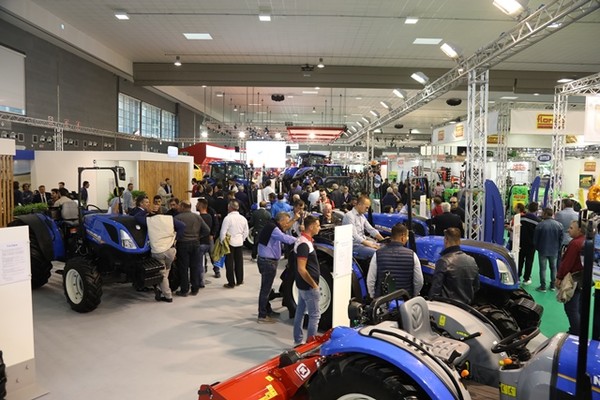
Agrilevante, a resource for Mediterranean agriculture
The 2019 edition of the showcase of technologies and machines for agriculture, to be held in the Bari exhibition centre from 10 to 13 October next, was presented in Bari. Growing numbers and a new section dedicated to animal husbandry, with the exhibition of fine breeds of cattle, horses, sheep and goats, characterize the review, organized by FederUnacoma and Nuova Fiera del Levante with the support of the Puglia Region Agriculture Department. Agrilevante confirms itself as a point of point reference for operators in the entire Mediterranean area, but also in Sub-Saharan Africa and some Asian regions
This very rich edition promises new records. These are the prospects for Agrilevante 2019, the international review of technologies and machinery for agriculture held at the Bari Exhibition Centre from 10 to 13 October next. Organized by the Italian federation of manufacturers FederUnacoma (Confindustria) together with the Nuova Fiera del Levante and thanks to the support of the Puglia Region’s Department of Agriculture, the exhibition - presented on March 5th with a press conference in Bari - aims to surpass the results of the last edition (October 2017), where there were 330 exhibiting industries, covering a surface of 55 thousand square metres, with 70,700 visitors, of which 3,200 from abroad.
The showcase stems from the decision to separate the agricultural section from the Levante trade fair and make it an independent event, highly specialized and aimed at an audience of professionals in agriculture and agricultural mechanics, and over the years it has acquired ever higher technical contents and a notable international calibre. “For the Nuova Fiera del Levante, Agrilevante confirms its place as a leading event dedicated to specialized and foreign operators of the agricultural sector in the Mediterranean - underlined during the conference the President of the Bari exhibition body Alessandro Ambrosi - a review that has recorded in recent editions a constant growth in the number of exhibitors, visitors and foreign delegations”.
“I think it is important to point out that the mission of Agrilevante - added Ambrosi - does not only mean a broad choice of technologies for agricultural production, but also the management of new development models in the various agricultural regions that it targets, from Mediterranean Europe to the Balkans, from the Middle East to North Africa, but also sub-Saharan Africa and some Asian regions. This is a new point of view. Very concrete”.
“The objective of the review - reiterated the CEO of FederUnacoma surl Massimo Goldoni - is to promote the most innovative production in tractors, machinery, equipment for soil processing, crop treatments, irrigation, harvesting of agricultural products, management of biomass for energy production, and to intercept a demand for technologies that are expected to grow over the next few years”.
“Puglia plays a vitally important role in the agricultural and agri-food sector at a national level - said the Councillor for Agri-food Resources of the Puglia Region, Leonardo di Gioia - and, due to its strategic position of proximity to the countries bordering the Mediterranean basin, it is a prime platform for the exchange not only of products but also of know-how”.
“This relevance - added Di Gioia - is also strengthened with the Agrilevante event, offering to our Region and to farms in particular, opportunities for knowledge, comparison and, naturally, promotion in the field of agricultural mechanization”. Describing the innovations of the 2019 edition, Massimo Goldoni finally noted the inauguration of the section dedicated to livestock farms, with the exhibition of cattle, horses, sheep and goats.
The new section - organized in collaboration with the national AIA, with the ARA of Puglia and with UmbriaFiere - promises not only to attract a large audience of professionals and enthusiasts of animal husbandry, but also to deepen the knowledge and debate on issues of animal welfare and overall sustainability of livestock production chains.








